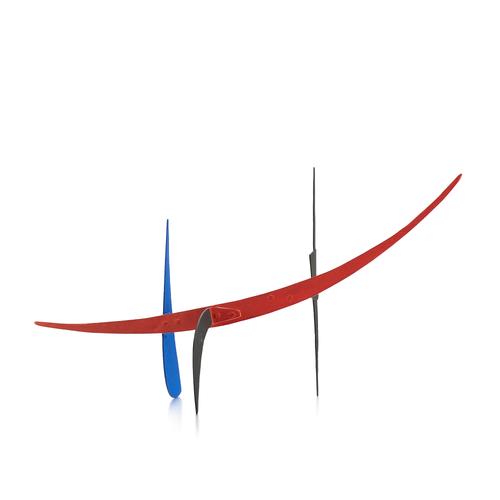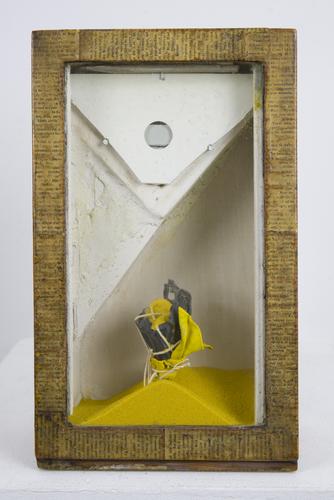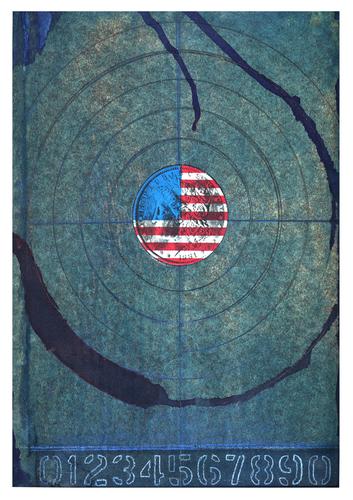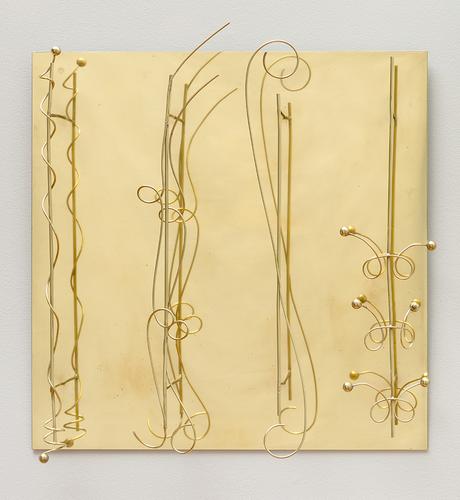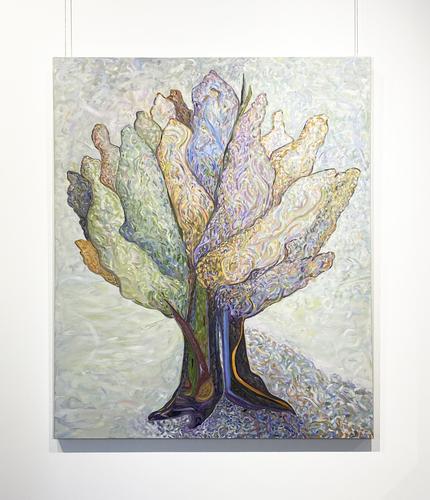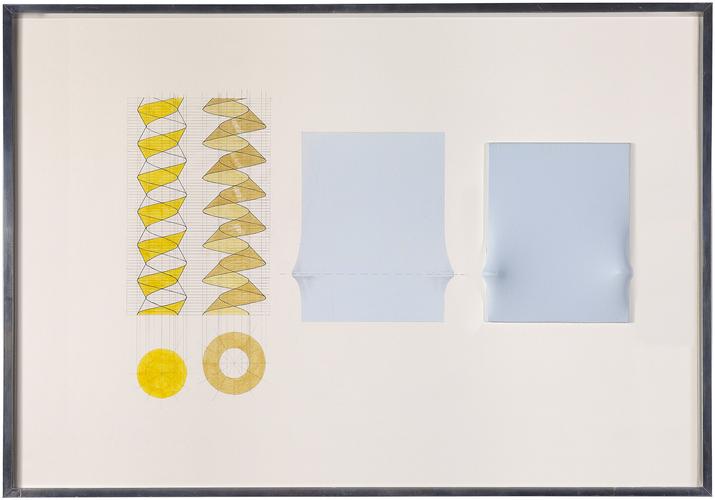Barbara Mathes Gallery is pleased to announce Uncanny Objects, an exhibition of sculptural works exploring the compelling strangeness captured by Freud’s theory of the uncanny. For Freud, the uncanny is the feeling elicited when the boundaries between familiar and unfamiliar become blurred. Automata, shadows, mirrors, and doubles are frequent emblems of the uncanny, producing an uneasy marriage of the animate and the inanimate, the alive and the dead, the real and the imaginary.
In Alexander Calder’s Untitled (1940) a sharp red crescent balances on three equally pointed legs. These appendages seem poised, mid-movement: Calder often emphasized that when he cut out his plates he wanted them to be “more alive.” Drawing upon the suggestive formal vocabulary of surrealism, Untitled epitomizes the dramatic biomorphism of Calder’s mature work.
While the motion of Calder’s stabiles is implied, Joseph Cornell’s Untitled (Yellow Sand Fountain) (1959) is a playful box whose movement requires the participation of the spectator. When tipped over, the sand funnels through an hourglass made of broken glass and string, revealing a hidden starfish and cork ball. Cornell here provides a whimsical meditation on the passage of time and the recurrence of memories typical of Freud’s theory of the uncanny.
Like Cornell, Louise Nevelson often used found objects in her assemblages. Subsumed into architectural monochrome, these objects become unfamiliar players in an interchange of light and dark. Dawn’s Landscape IX (1975) is part of a rare white-painted series from 1975 in which an intricate arrangement of wooden objects creates a complex play of shape and depth – doubles and shadows – establishing what Nevelson referred to as “the fourth dimension.”
Using unconventional materials, biomorphic abstraction, imagined worlds, doubling, and repetition, the artists presented here make known objects strange and bring intimacy to the unfamiliar. The exhibition will also include works by Agostino Bonalumi, Frank Bowling, Jan Dibbets, Karen Wilberding Diefenbach, and Fausto Melotti.
Contact Information
Barbara Mathes Gallery is located at 22 East 80th Street. The gallery is open Monday through Friday, 10am to 6pm. For more information or images, please contact the gallery at 212-570-4190 or art@barbaramathesgallery.com.

